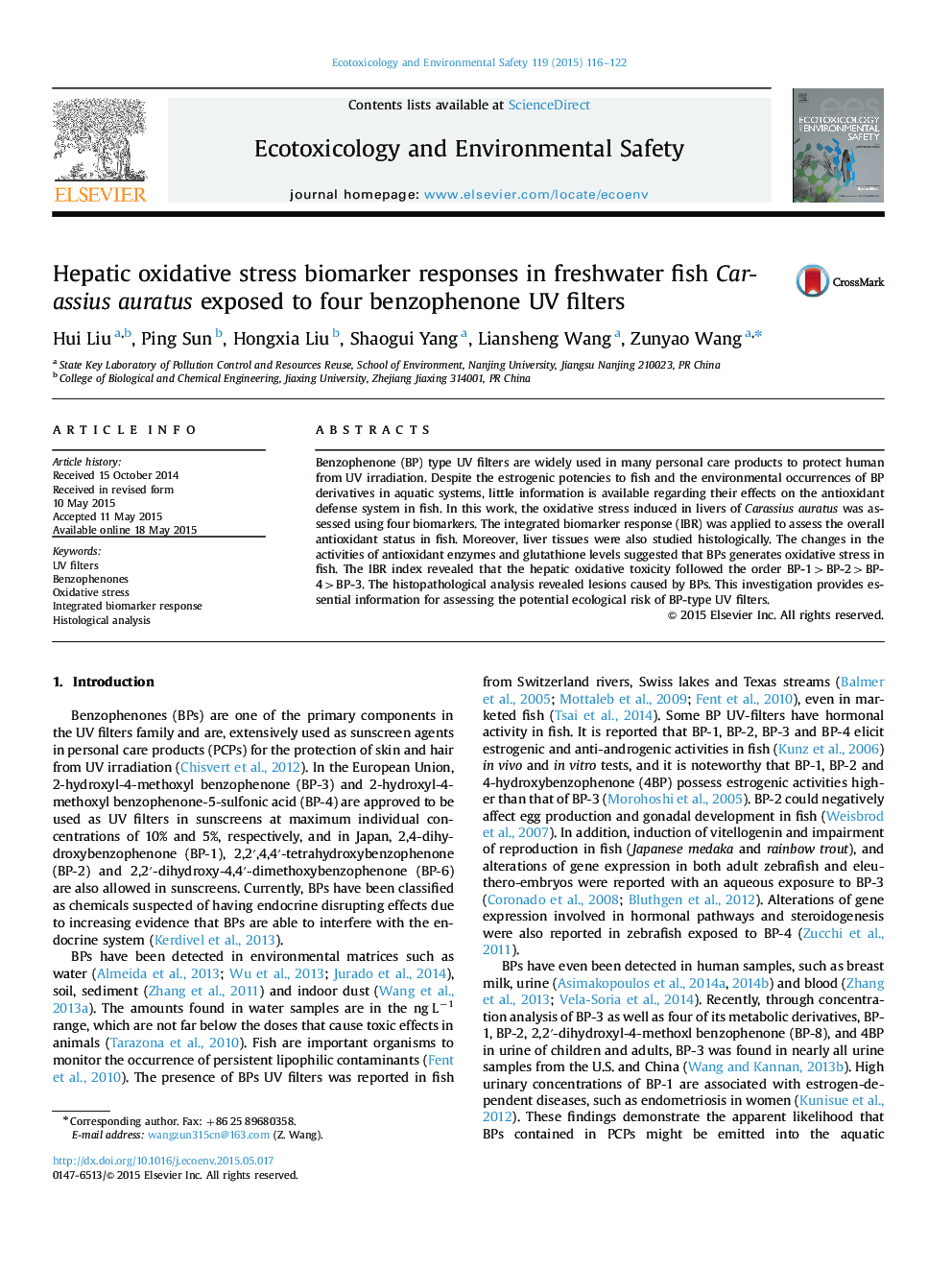| Article ID | Journal | Published Year | Pages | File Type |
|---|---|---|---|---|
| 4419617 | Ecotoxicology and Environmental Safety | 2015 | 7 Pages |
•BPs effects on fish were assessed using biochemical biomarkers.•BPs caused alterations in the activities of SOD, CAT, GST and the content of GSH.•Toxicity order was proposed via the integrated biomarker response.•Histopathological changes were obvious in fish liver exposed to BPs.
sBenzophenone (BP) type UV filters are widely used in many personal care products to protect human from UV irradiation. Despite the estrogenic potencies to fish and the environmental occurrences of BP derivatives in aquatic systems, little information is available regarding their effects on the antioxidant defense system in fish. In this work, the oxidative stress induced in livers of Carassius auratus was assessed using four biomarkers. The integrated biomarker response (IBR) was applied to assess the overall antioxidant status in fish. Moreover, liver tissues were also studied histologically. The changes in the activities of antioxidant enzymes and glutathione levels suggested that BPs generates oxidative stress in fish. The IBR index revealed that the hepatic oxidative toxicity followed the order BP-1>BP-2>BP-4>BP-3. The histopathological analysis revealed lesions caused by BPs. This investigation provides essential information for assessing the potential ecological risk of BP-type UV filters.
